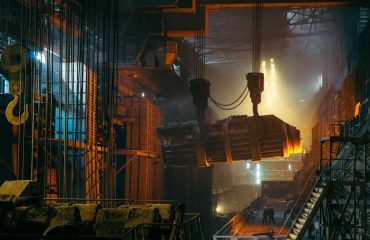The steel industry, a cornerstone of global infrastructure and manufacturing, faces unique challenges in managing its intricate supply chain. From the extraction of raw materials to the delivery of finished products, the process is complex, demanding, and increasingly susceptible to global disruptions. This post delves into the key aspects of supply chain management within the steel industry, exploring its intricacies and highlighting strategies for optimization.
1. Securing the Source: Raw Material Procurement in Steel Production
The foundation of any steel production lies in the secure and efficient procurement of raw materials. This primarily involves iron ore, coal, and limestone. The supply chain begins with exploration and mining, often involving complex international collaborations and agreements. Challenges include fluctuating commodity prices, geopolitical instability impacting mining operations in key regions, and the environmental concerns associated with extraction. Effective supply chain management in this phase requires:
- Long-term contracts with reliable suppliers: Mitigating price volatility and ensuring a consistent supply.
- Diversification of sourcing locations: Reducing reliance on single suppliers and mitigating geopolitical risks.
- Sustainable sourcing practices: Addressing environmental concerns and promoting responsible mining.
- Advanced analytics and forecasting: Predicting demand and adjusting procurement strategies accordingly.
2. The Crucible of Creation: Optimizing Steel Production Processes
Once raw materials are secured, the focus shifts to optimizing the steel production process itself. This involves intricate processes like ironmaking (blast furnaces or direct reduction), steelmaking (basic oxygen furnaces or electric arc furnaces), and continuous casting. Efficiency in this stage is crucial for minimizing costs and maximizing output. Key aspects of supply chain management within production include:
- Inventory management: Maintaining optimal levels of raw materials and intermediate products to avoid bottlenecks and stockouts.
- Process optimization: Implementing lean manufacturing principles and advanced technologies to improve efficiency and reduce waste.
- Real-time monitoring and control: Utilizing sensors and data analytics to track production parameters and identify potential issues early on.
- Predictive maintenance: Minimizing downtime through proactive maintenance of equipment.
3. Global Reach: Logistics and Transportation in the Steel Industry
The steel industry is inherently global, with raw materials often sourced from different parts of the world and finished products shipped to diverse markets. Efficient logistics and transportation are therefore critical. The sheer volume and weight of steel products present unique challenges, demanding specialized transportation infrastructure and careful planning. Key considerations include:
- Mode selection: Optimizing the use of rail, road, sea, and inland waterway transportation based on cost, speed, and distance.
- Containerization and packaging: Protecting steel products during transportation and ensuring efficient handling.
- Port infrastructure and handling: Efficient loading and unloading of large quantities of steel at ports.
- Supply chain visibility: Tracking shipments in real-time to monitor progress and identify potential delays.
4. Meeting Customer Needs: Inventory Management and Order Fulfillment
Effective supply chain management extends beyond production and logistics to encompass inventory management and order fulfillment. Steel products are often customized to meet specific customer requirements, necessitating accurate forecasting and efficient inventory control. This requires sophisticated systems capable of:
- Demand forecasting: Predicting customer demand to optimize inventory levels and production schedules.
- Warehouse management: Efficiently storing and managing large quantities of steel products.
- Order processing and tracking: Providing customers with real-time updates on order status.
- Just-in-time (JIT) inventory management: Minimizing inventory holding costs by receiving materials and components only when needed.
5. Embracing the Future: Technology and Innovation in Steel Supply Chains
The steel industry is undergoing a significant transformation, driven by technological advancements. The adoption of digital technologies is revolutionizing supply chain management, offering enhanced visibility, efficiency, and resilience. Key technological innovations include:
- Blockchain technology: Enhancing transparency and traceability throughout the supply chain.
- Artificial intelligence (AI) and machine learning (ML): Optimizing production processes, predicting demand, and improving logistics.
- Internet of Things (IoT): Monitoring equipment and materials in real-time, enabling proactive maintenance and improved efficiency.
- Digital twins: Creating virtual representations of the supply chain to simulate scenarios and optimize operations.
In conclusion, mastering supply chain management in the steel industry is crucial for profitability and competitiveness. By embracing technological advancements, focusing on sustainability, and fostering strong relationships with suppliers and customers, steel companies can forge a future of efficiency, resilience, and growth.
Tags: Steel Supply Chain, Steel Industry, Supply Chain Management, Steel Logistics, Steel Production




